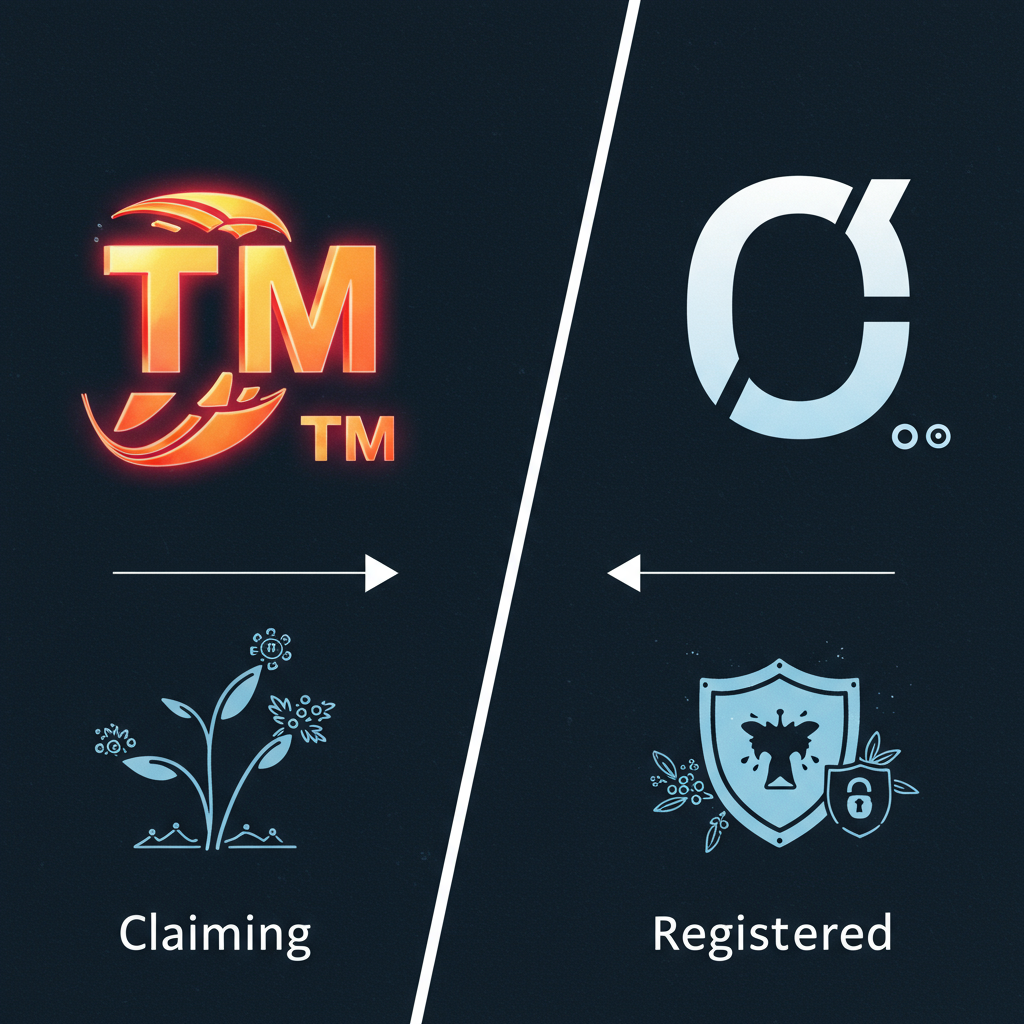Can a Trademark Be Sold or Transferred? Power Play of Ownership
Unpacking the Power Play of Brand Ownership

Ever wondered if that iconic brand name, logo, or jingle could change hands like a footy card? You bet it can! In the dynamic world of business, a trademark isn't just a fancy badge; it's a valuable asset, a legal moat protecting your brand's turf. And just like any other prized possession, it can be bought, sold, and transferred.
But why would a business want to offload something so crucial? And how exactly does this brand ballet work? Strap in, because we're about to unpack the fascinating world of trademark ownership rights and why knowing the ins and outs of selling or transferring trademarks is a game-changer for any savvy entrepreneur.
The Legal Lowdown: Yes, Trademarks Can Be Sold!
At its core, a registered trademark grants its owner exclusive rights to use that mark for specific goods or services. Think of it as a property deed for your brand's identity. This exclusivity makes trademarks incredibly powerful, and crucially, they are assets that can be legally transferred.
This process is known as a trademark assignment. It’s the formal legal mechanism where the original owner (the "assignor") passes all their rights, title, and interest in a trademark to another party (the "assignee"). We’ve seen this happen on a massive scale: remember when Disney acquired Lucasfilm, bringing the Star Wars empire under its wing? That wasn't just about the movies; it included the colossal portfolio of Star Wars trademarks that are worth more than a treasure chest of galactic credits!
How a Trademark Transfer Works: More Than Just a Handshake
So, how do you legally shift that brand powerhouse? It’s not as simple as a handshake deal down at the local pub. A trademark transfer involves a precise legal process to ensure the change of ownership is valid and enforceable.
The cornerstone of this process is the trademark assignment agreement. This isn't just any old contract; it’s a detailed legal document outlining the transfer of rights. Key requirements for a valid agreement include:
- Clear Identification: Precisely identifying the trademark(s) being transferred.
- Parties Involved: Naming the assignor and assignee.
- Consideration: What's being exchanged for the trademark (usually money).
- Goodwill Transfer: This is the absolute kicker! For a trademark assignment to be truly valid, the goodwill associated with the trademark must be transferred along with it.
What’s "goodwill," you ask? It's the reputation, customer loyalty, and overall positive association people have with a brand. Imagine buying the iconic Aussie brand VEGEMITE. You're not just buying the name; you're buying decades of trust, taste, and national pride. Without transferring that underlying reputation, the trademark itself can lose its validity because it no longer points to the original source of the goods or services people recognise.
Assignment vs. Licensing: Knowing the Difference is Gold
While both involve someone else using your trademark, trademark assignment and trademark licensing are chalk and cheese. Get these mixed up, and you could be in a world of hurt!
- Assignment: The Full Monty!
- This is a full transfer of ownership rights. Once assigned, the original owner no longer holds any rights to that trademark. It's a permanent change of hands.
- Licensing: Sharing the Sandbox
- This is where you allow another entity to use your trademark without giving up ownership. Think of it as renting out your brand. You, the trademark owner (the "licensor"), grant permission to another party (the "licensee") to use your mark under specific terms and conditions, often for a fee or royalty.
A classic example of licensing is the entertainment giant Disney. They don't sell off Mickey Mouse; instead, they license his image and name to countless companies for toys, clothing, theme park rides, and more. Disney retains ownership, but others get to leverage the magic of the Mouse. It’s a brilliant way to expand brand reach and rake in royalties without relinquishing control.
Country-Specific Rules: The Global Game of Trademark Transfers
Navigating trademark transfers across borders can be a bit like playing a global game of Twister – each country has its own rules and requirements. Here's a quick tour of what to expect in some key jurisdictions, with a special shout-out to our home turf!
A. United States (USPTO)
When selling a trademark in the USA, the transfer of ownership is recorded with the USPTO Assignment Recordation Branch. Just like here in Australia, the importance of transferring goodwill along with the trademark is paramount to ensure the assignment is valid and enforceable. Without it, the assignment could be challenged.
B. European Union (EUIPO)
For a European Union Trademark (EUTM), the process for assigning an EU trademark (EUTM) involves filing a request with the EUIPO. Interestingly, the EU allows for partial trademark assignments, meaning you can transfer the trademark for only some of the goods and services it covers, or even for only a specific part of the EU.
C. United Kingdom (UKIPO)
Post-Brexit, the requirements for transferring trademarks in the UK are handled by the UK Intellectual Property Office (UKIPO). Similar to other jurisdictions, proper legal documentation needed for a valid transfer is crucial, typically an assignment deed or agreement, which should then be registered.
D. China (CNIPA)
China can be a unique beast due to its "first-to-file" system. This can lead to first-to-file challenges when selling a trademark, as squatters might register your mark before you do. For foreign companies to acquire trademarks in China, meticulous due diligence is essential to ensure the seller actually owns the rights and that there are no prior conflicting registrations.
E. Australia (IP Australia)
Right here at home, the official process for assigning trademark ownership is handled by IP Australia. To assign a registered trademark, you'll need to submit a Request to Record a Change of Ownership (Form 11). Just like everywhere else, the legal requirements for partial vs. full transfers need to be strictly adhered to, ensuring all the relevant goods and services are correctly identified.
Special considerations for Indigenous trademarks are also gaining traction. IP Australia is increasingly looking at ways to protect and manage trademarks that incorporate Indigenous words, imagery, or cultural expressions, ensuring fair and appropriate ownership and use.
F. India (IP India)
In India, how businesses can sell or transfer trademarks is governed by the Trade Marks Act. The importance of registered agreements for legal enforcement cannot be overstated. While an unregistered assignment agreement might be valid between the parties, registering it with the Trademark Registry provides crucial public notice and stronger legal standing against third parties.
Why Sell or Transfer? The Strategic Playbook
Beyond just moving assets, there are plenty of strategic reasons why businesses engage in trademark transfers:
- Mergers & Acquisitions: This is a big one! When one company buys another, like when a heavyweight titan swallows a nimble startup, the acquired company’s trademarks are typically part of the deal, transferring ownership to the new parent entity.
- Brand Strategy Changes: Sometimes a business decides to rebrand or shift business focus. They might sell off a trademark that no longer aligns with their core strategy, freeing up resources and streamlining their brand portfolio.
- Financial Gain: Let's face it, some trademarks are incredibly valuable! Businesses might sell off a highly recognisable but non-core trademark simply for a hefty financial gain, turning an asset into cash.
- Legal Disputes: In some cases, a trademark transfer can be a way of settling cases through ownership transfers. Instead of a protracted legal battle, one party might agree to assign a disputed trademark to the other as part of a settlement agreement.
Key Risks & Considerations: Don't Trip at the Finish Line!
While the benefits are clear, selling a trademark isn't without its pitfalls. You need to be sharp to avoid common traps:
- Ensuring proper legal documentation: This is non-negotiable. A shonky assignment agreement can unravel the entire deal and leave you with no rights. Get expert legal advice!
- Avoiding fraudulent trademark sales: Unfortunately, there are scammers out there. Always verify the seller's identity and their legitimate ownership of the trademark through official registries.
- Tax implications of trademark sales in different countries: The taxman always gets his due! Be aware that selling a trademark can trigger capital gains tax or other levies, which vary significantly from country to country. Get advice from a tax professional before making any moves.
Conclusion: The Power of a Properly Handled Transfer
Understanding how to properly handle trademark transfers is an absolute must for any business looking to grow, restructure, or protect its most valuable brand assets. Whether you're eyeing up a new acquisition, streamlining your brand portfolio, or just exploring future opportunities, knowing the ins and outs of trademark assignment is your secret weapon.
If you're thinking about buying, selling, or even licensing a trademark, don't go it alone. The legal landscape can be tricky, and getting it wrong can cost you big time. Your next step should always be to seek expert legal advice to ensure your brand's journey is smooth sailing, not a shipwreck!
FAQs about Selling and Transferring Trademarks
Q1: Can I sell an unregistered trademark?
A: While possible, it's far more complex and risky. Unregistered trademarks rely on "common law rights" based on use and reputation, which are harder to prove and transfer. A registered trademark provides clear, legally recognised ownership, making transfer much smoother.
Q2: How long does a trademark transfer take?
A: The timeframe can vary significantly depending on the country's intellectual property office workload and the complexity of the transfer. In Australia, once all correct documentation is filed with IP Australia, it can typically take a few weeks to a few months to be officially recorded.
Q3: What happens if goodwill is not transferred with the trademark?
A: If the goodwill associated with the trademark is not transferred along with the mark, the assignment may be deemed invalid. This means the new owner might not be able to enforce the trademark rights, effectively rendering the purchase useless.











